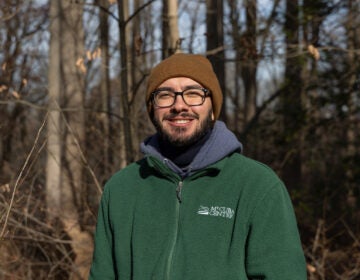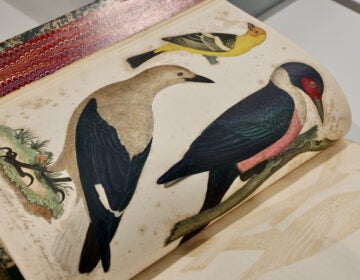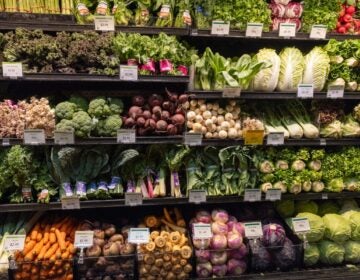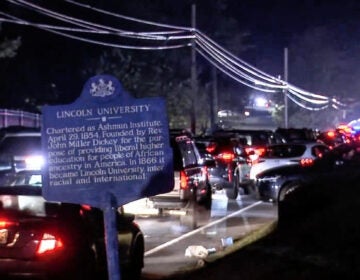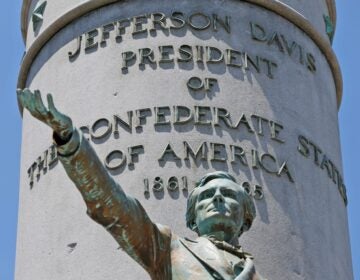Chester County hayfields can be traps for baby birds. A collaboration aims to make them havens
Chester County farmers, conservationists and landowners are working together to help baby birds successfully leave the nest.
Have a question about Philly’s neighborhoods or the systems that shape them? PlanPhilly reporters want to hear from you! Ask us a question or send us a story idea you think we should cover.
In a big field outside Coatesville in Chester County early last summer, the golden hay was 3 feet tall.
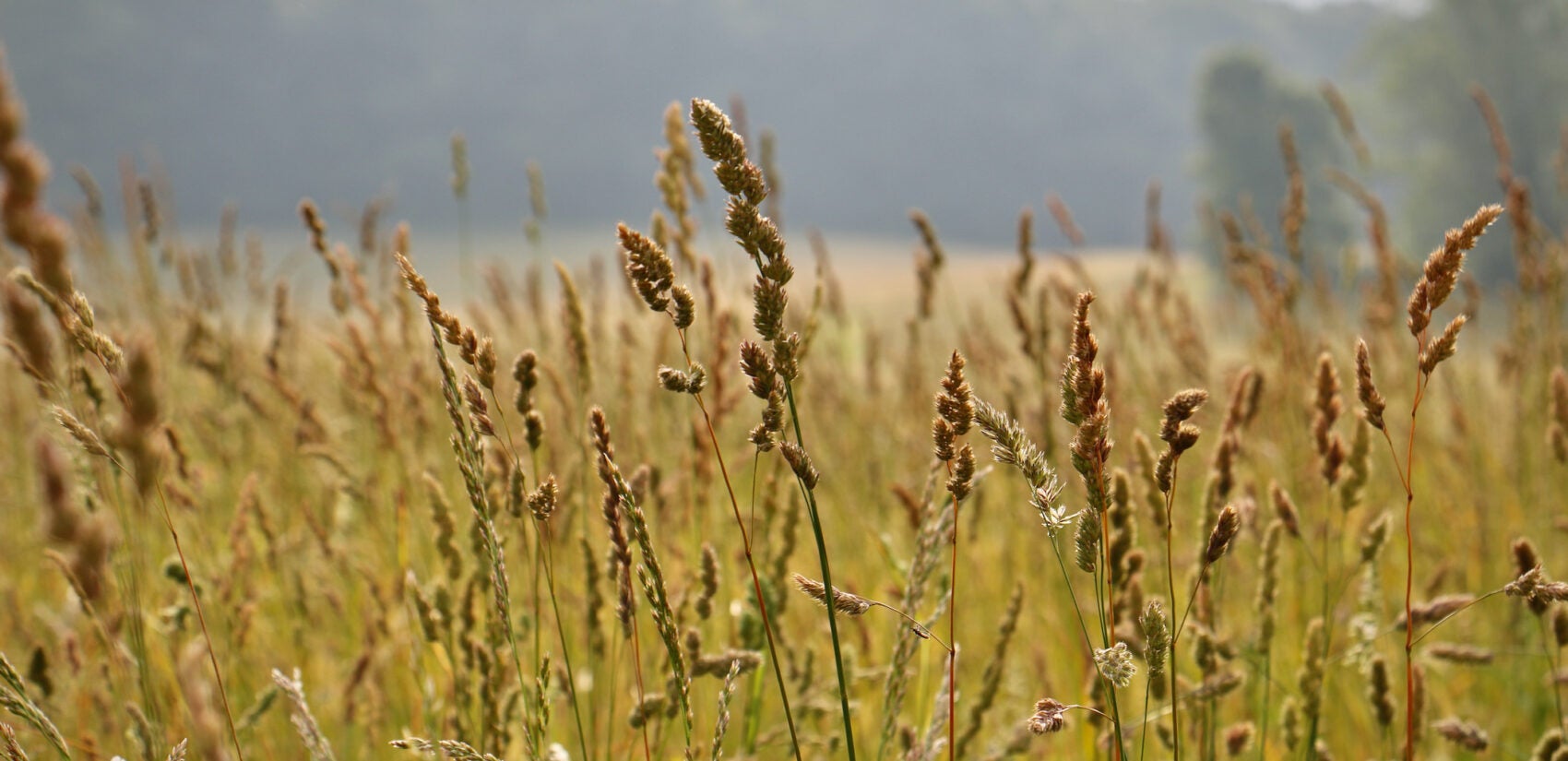
Hidden among the stalks of hay were small black, white and yellow birds known as bobolinks, which occasionally popped up and flew over the field.
“They nest right down on the ground,” said Zoë Warner, a consultant for the Willistown Conservation Trust who runs an initiative to protect bobolinks and other grassland birds in Chester County. “They make little pockets, little cups of grass.”
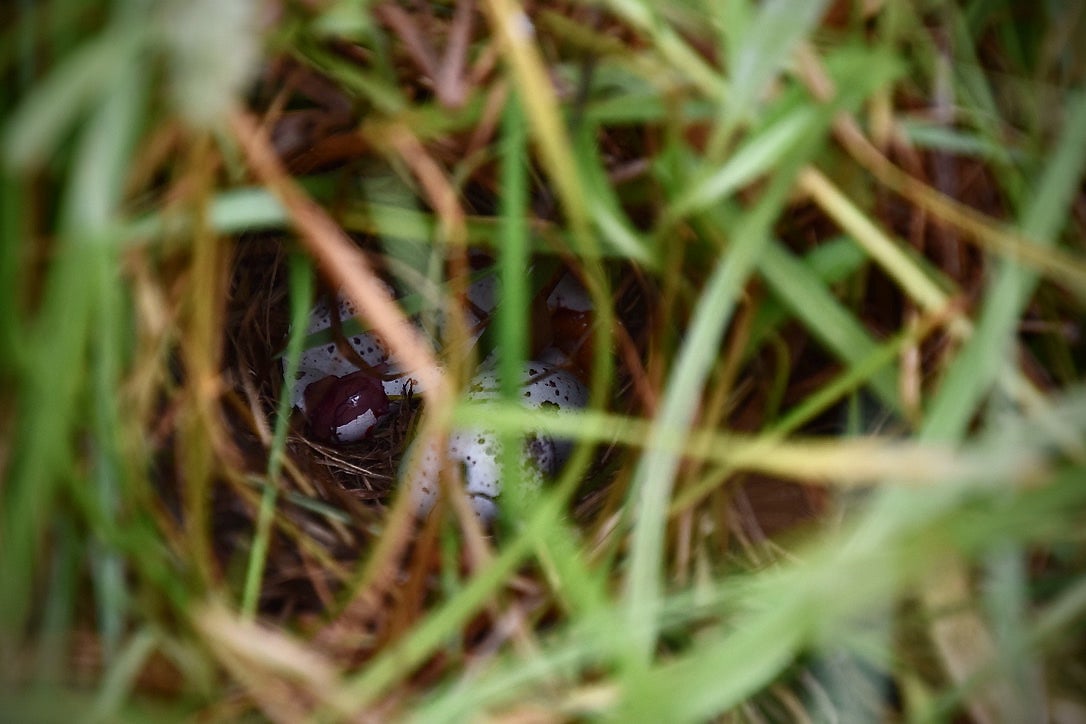
A farmer will mow the field in July to harvest the hay growing there. By then, most of the young bobolinks will have hatched and grown big enough to fly out of the grass to escape the mower.

But nationwide, bobolinks and other grassland birds are struggling. Researchers have found grassland birds have lost more than 50% of their population since the 1970s. That’s a loss of at least 700 million adult birds.
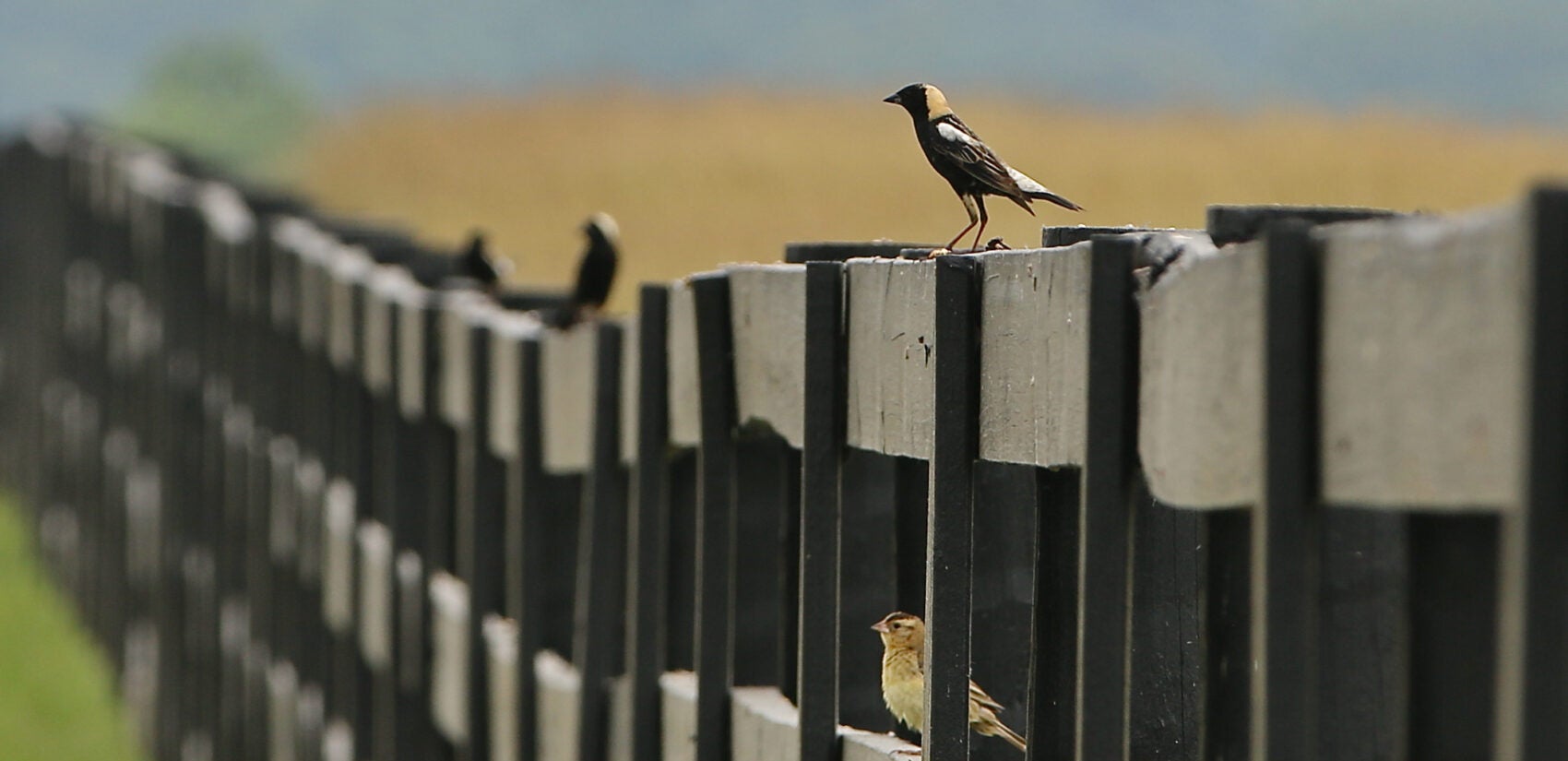
Without major changes, the bobolink is on track to lose another half of its population in the next 50 years.
Warner hopes to turn this trend around, at least locally. She’s working with a coalition of land owners and farmers to try to make parts of pastoral Chester County a place where grassland birds can thrive.
Fixing an ecological ‘trap’
Bobolinks spend the winter in South America, then fly north to breed in meadows and grasslands in the northern United States.
The hayfields of Chester County can be a perfect place to build nests, Warner said. But they can also be a sort of trap. If farmers cut the hay before the baby bobolinks are big enough to fly, the young birds can get caught in the mowers and die.
“They’re walking in the grasses, and they’re still being fed by their parents. That’s when they’re really vulnerable,” Warner said. “If there’s not enough time to re-nest, which usually there isn’t, those two parents are not replacing themselves.”
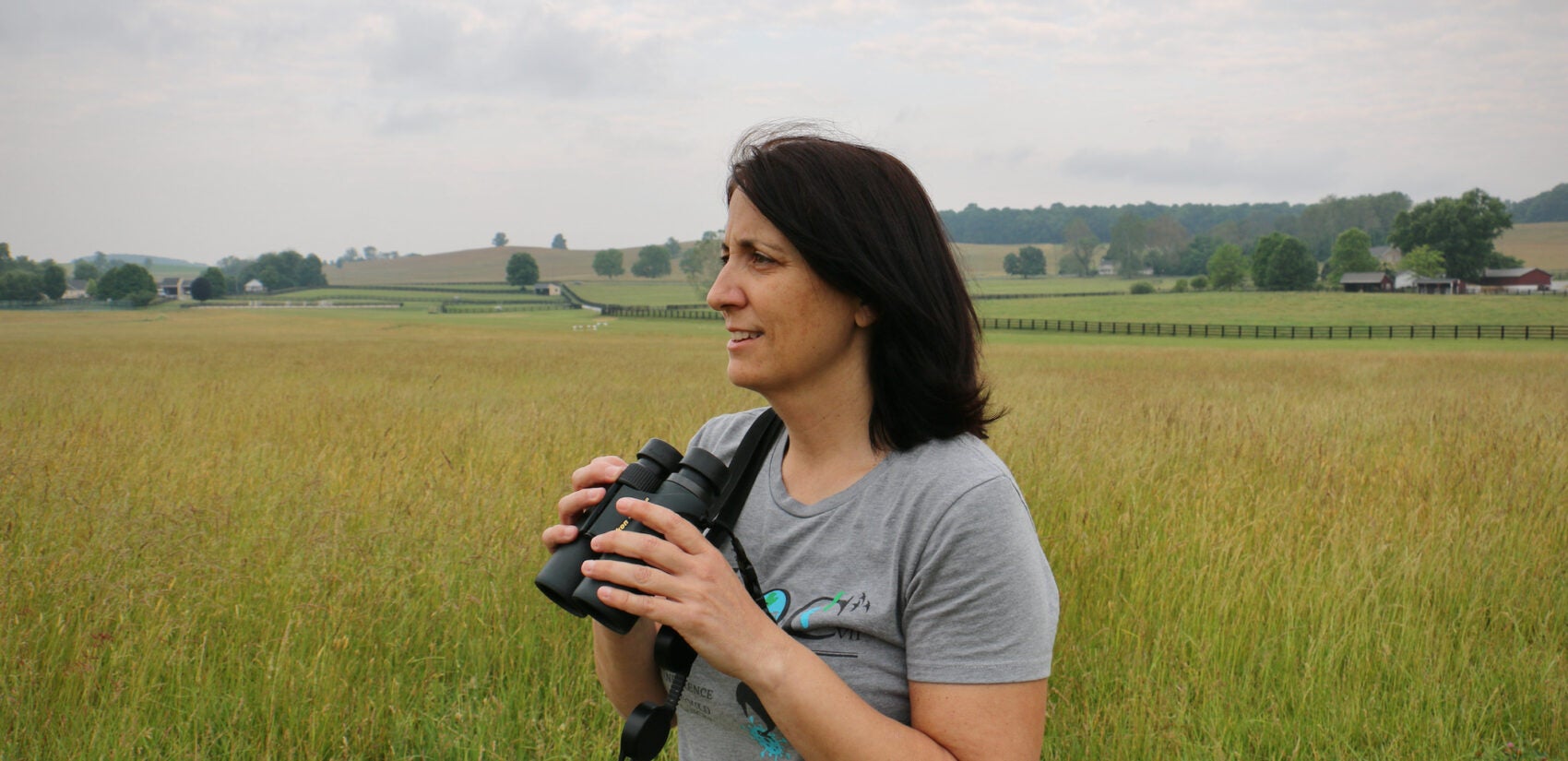
Warner is now asking landowners and farmers in Chester County to hold off on mowing their hay fields for a few weeks to give the birds more time to grow. Two years ago, she launched the Grassland Bird Collaboration, which now covers 1,500 acres in the Doe Run area, where farmers and landowners have agreed to delay mowing to try to protect the birds.
A hay field owned by D.D. Matz, once part of the massive King Ranch property in Chester County, is what Warner considers a “premier” field for bobolinks. The farmer who grows hay on the field has been delaying the harvest date for years, and this summer plans to mow the field in July. In the past, the field would have been cleared for a first cutting in late May or early June, Matz said.
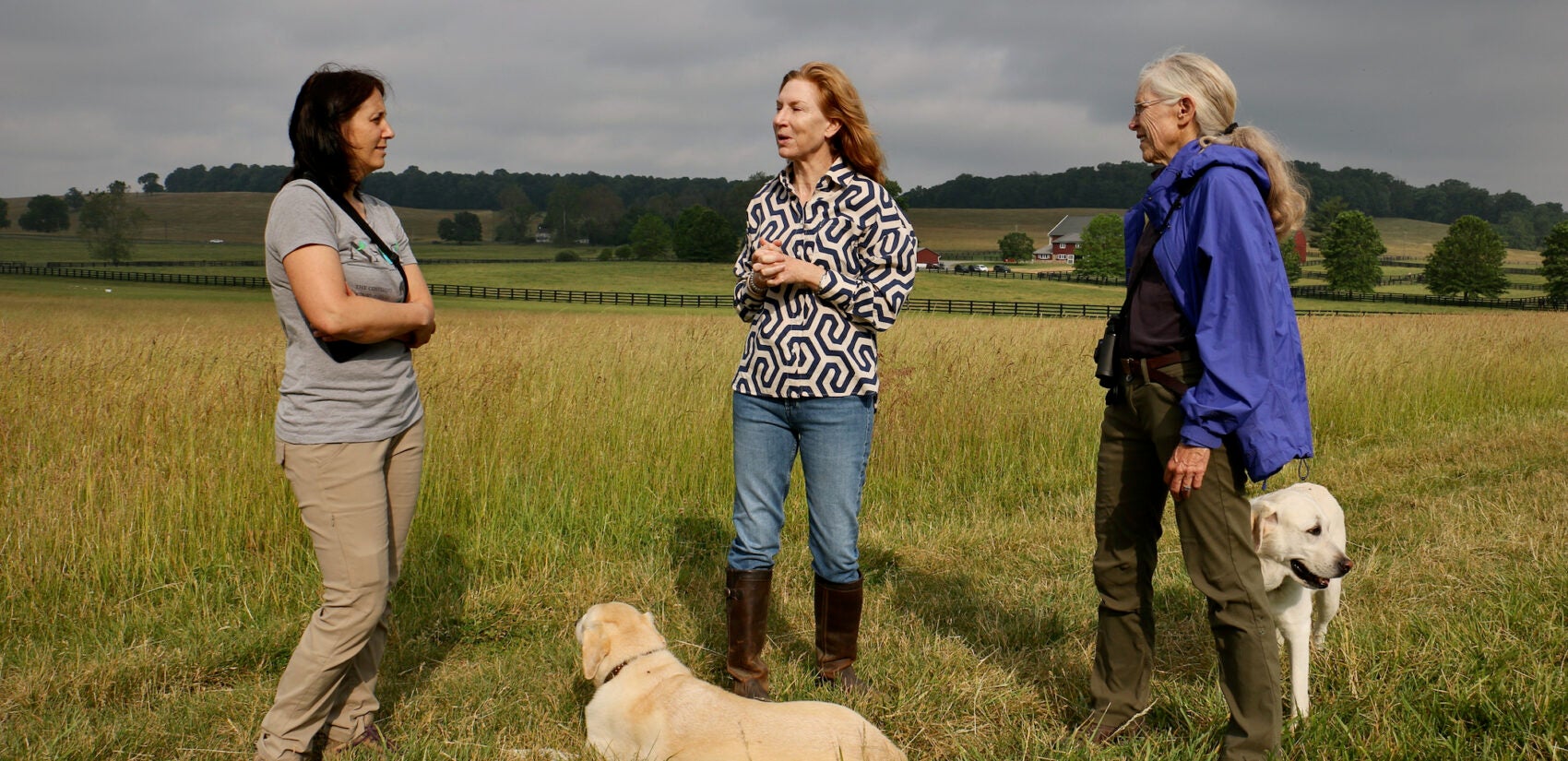
The delay represents the “critical period when those babies are really getting strong enough to get out of the way of the mower,” Warner said.

Matz, who sits on the board of a land conservancy and museum that holds conservation easements on many properties in the area, said her field’s hay harvest is less profitable now, mostly because her farmer can only get one cutting out of the field each summer, rather than two. But it’s a tradeoff she’s willing to make.
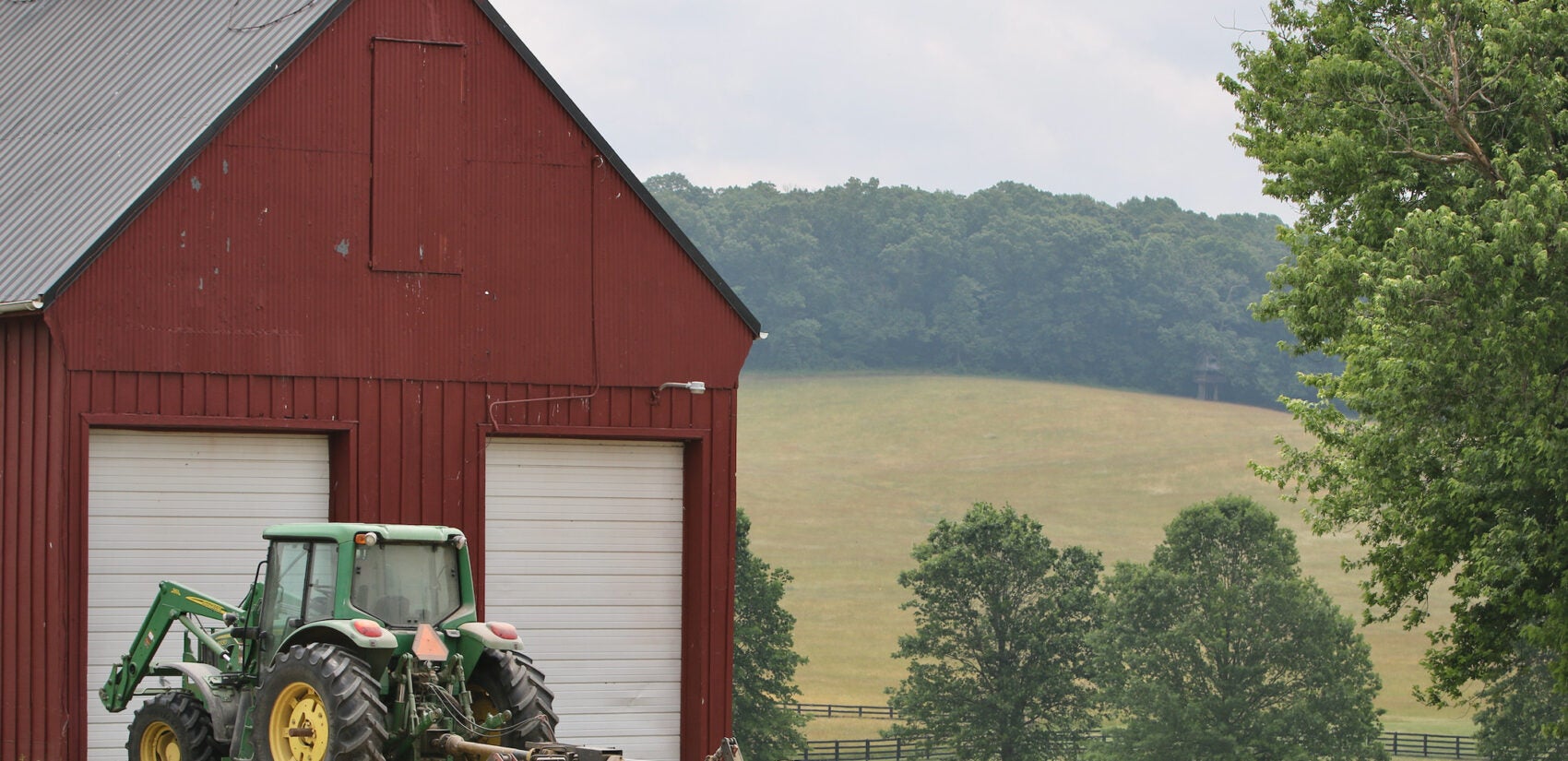
“I get so much enjoyment out of seeing these birds,” she said. “I have some birds that people don’t see in this area that often, and I think it’s because we let nature take its course a little bit more.”
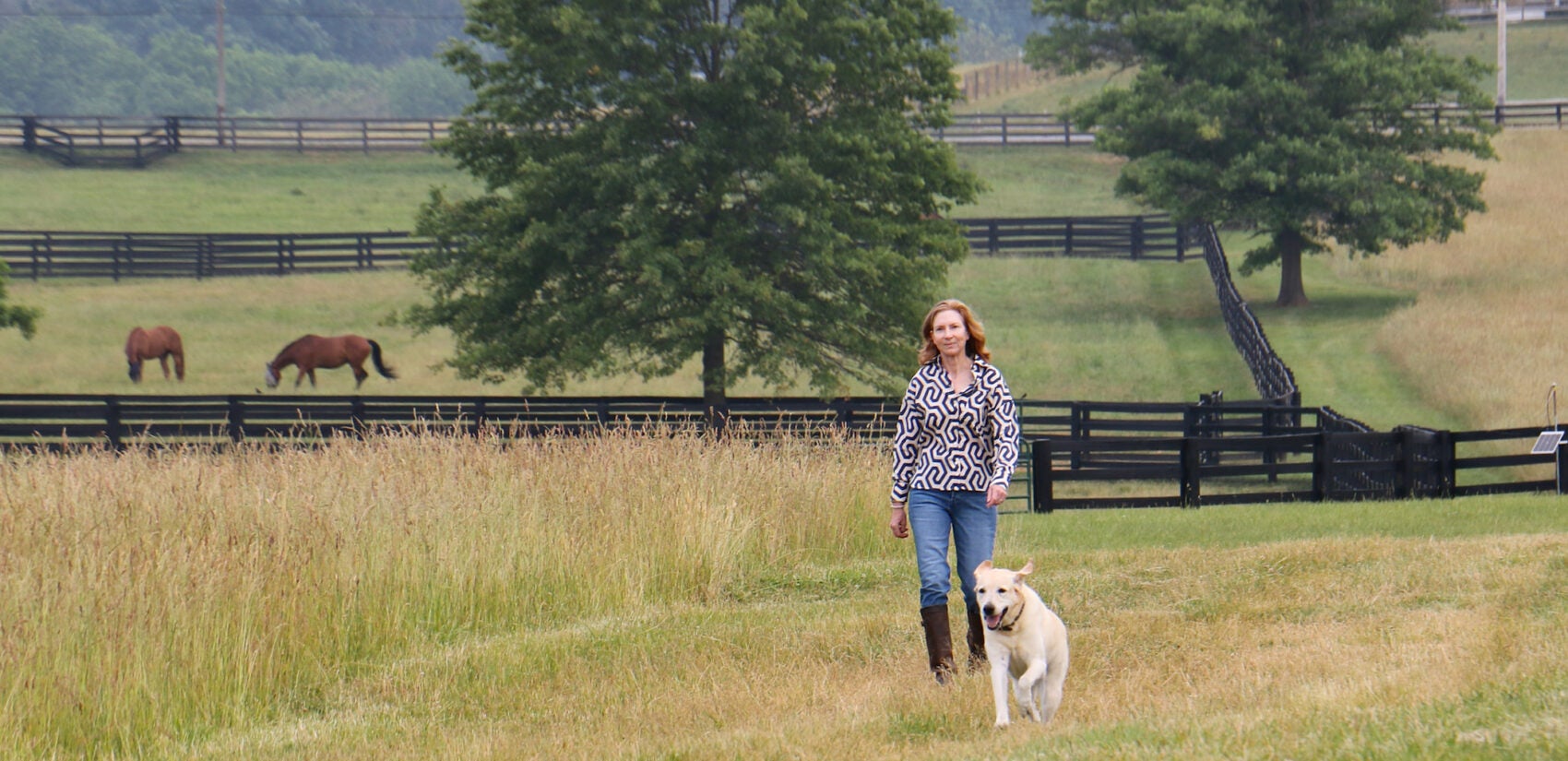
An ‘alarming’ decline
Helping grassland birds successfully leave the nest is important, because they have lost more population than any other group of birds over the last 50 years.
“That’s pretty alarming,” said Amy Johnson, a conservation biologist at the Smithsonian’s National Zoo and Conservation Biology Institute who focuses on grassland birds.
Experts say habitat loss and the intensification of agriculture are the primary reasons for the decline.
“Overgrazing, earlier and more frequent harvests of hay, increased use of pesticides across the landscape,” Johnson said. “If you’re going to expand on development, the easiest thing to develop is really an open grassland.”
Modern agricultural practices mean a habitat may seem available to birds when they’re deciding where to settle, but the habitat disappears when harvest time comes, said Wesley Hochachka, a senior research associate with the Cornell Lab of Ornithology.
The birds “fall into an ecological trap,” he said. “It’s an area that seems to be attractive but then ultimately doesn’t let the birds successfully nest.”
Johnson works in Virginia, where just like in Chester County, peak haying season in late May and early June overlaps with nesting season. Research by Bernadette Rigley, a doctoral fellow on Johnson’s team, has shown that mowing during that time can be disastrous for baby birds.
“If the field is hayed at that time of year, we expect 100% mortality of nestlings in that field,” Johnson said.
So Johnson and Rigley worked with farmers and landowners to test out different mowing and grazing schedules, to find what works best for both the birds and the farmers. They discovered a compromise.
“If we can delay our haying until July 1, we can actually fledge out about 80% of those nests in the field — so a really significant increase in reproductive success just by delaying your haying for a few weeks,” Johnson said.
Searching for ‘symbiosis’
In Chester County, Warner hopes to weave a coalition between land owners, farmers and the local mushroom industry.
Jamie Hicks, a fourth generation farmer, is one of the farmers participating in the delayed mowing and research program. A recent Chester County “Farmer of the Year,” Hicks grows row crops, including soybeans and corn, as well as close to 3,000 acres of hay.
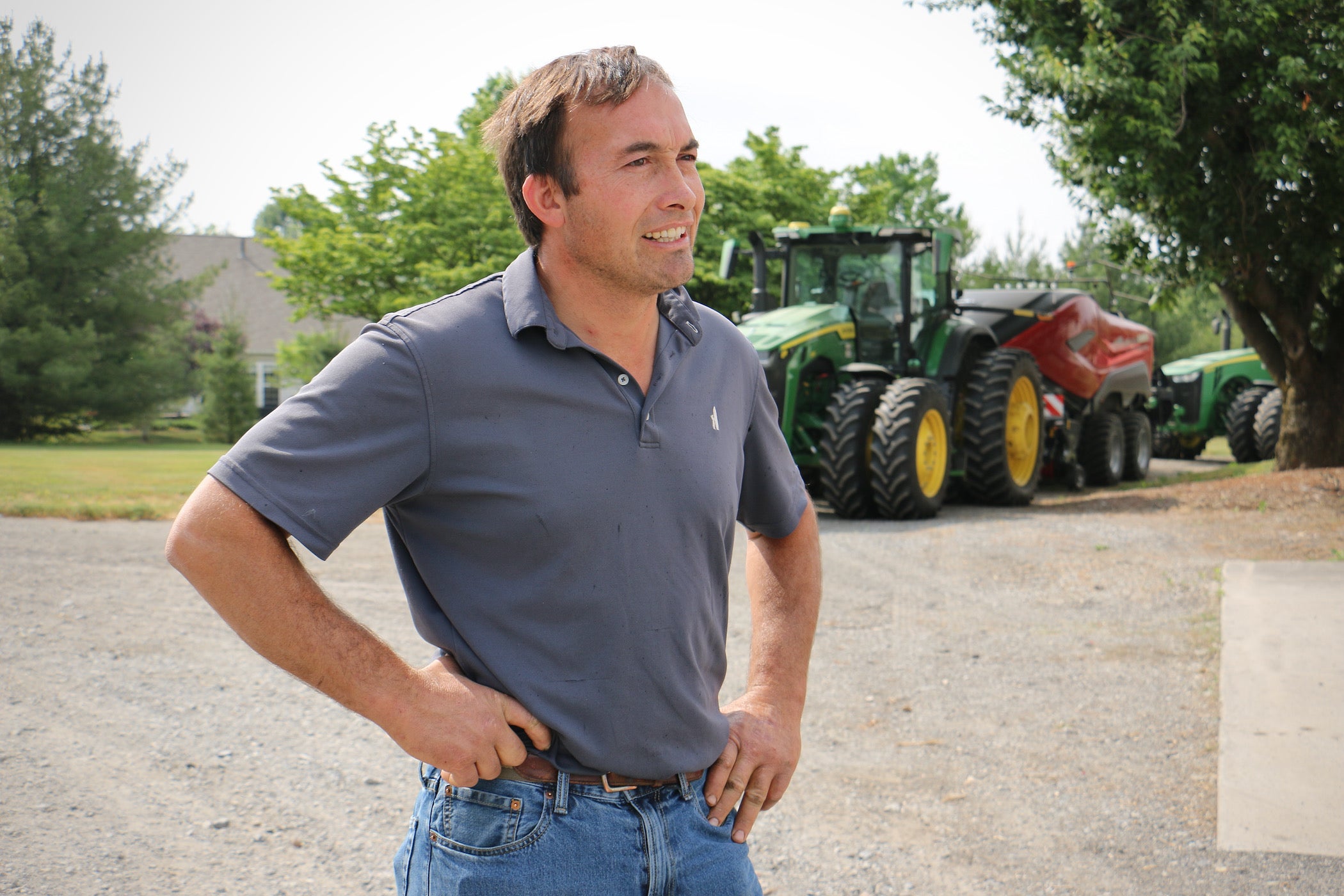
Hicks grows two types of hay: feed hay for horses and mulch hay for use in mushroom compost.
Premium feed hay is harvested early in the season, when grassland birds like bobolinks nest. Mulch hay can be harvested later, because it’s about quantity, rather than quality.
“Horse hay we try to cut … when it’s young, it’s green, it doesn’t go to seed,” Hicks said. “Mulch is the older hay that has a lot of the nutrients out of the plant. It’s basically more of a hollow stem, and it composts better.”
Horse hay sells for much more per ton than mulch hay, sometimes two to three times as much, said Andrew Frankenfield, a Montgomery County–based educator with Penn State Extension who focuses on hay and other forage crop production.
But he says it’s also harder to make, because farmers only have a tight two-week window to cut it — and their plans can be thrown off by the weather.
Hicks can’t harvest all of his hay fields during that two-week window, so even before he joined the delayed mowing program, he cut most of his hay for mushroom compost. Participating in the program gives him more flexibility to space out his mowing dates, without facing pressure to cut from landowners, he said.
“It’s actually almost a bit of a relief,” Hicks said.
Hicks says putting roughly 300 of the acres he farms into the delayed-mow program has not cost him revenue. He farms enough land that his team always stays busy, even if they delay mowing on some of their fields. It just means they focus on harvesting other hay fields earlier.
But Hicks says committing to mow after July 1 could be difficult for smaller farmers, or for farmers in places without a strong mushroom industry to buy the mulch hay.
Frankenfield, the extension educator, agrees. Switching from growing feed hay to mushroom hay requires different baling equipment, he said, and could cut revenue by at least half for a farmer that grows horse hay exclusively.
“In that case, it wouldn’t be financially viable for them to likely do that,” he said. “[They] would certainly likely need some compensation if they were to enter into that program.”
Warner does not want the program to cost farmers revenue, so she hopes to one day be able to compensate them for participating. The Virginia Grassland Bird Initiative, launched by Johnson’s team along with local partner organizations, pays farmers to try out the mowing and grazing techniques it recommends.
Warner also plans to continue surveys and bird tracking to determine which fields are important nesting habitats for which species. This data could inform farmers’ mowing schedules and other land management decisions, she said.
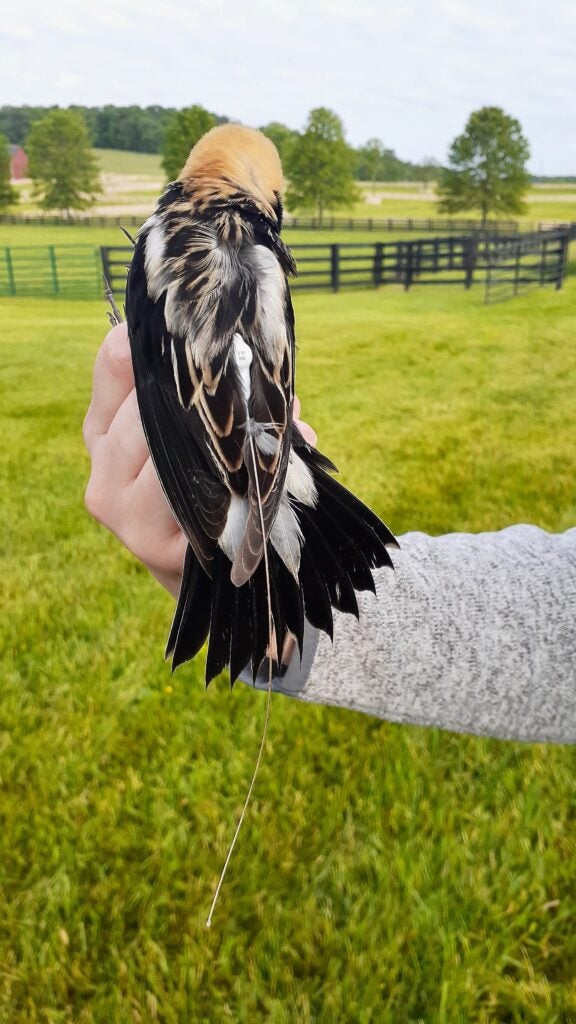
Warner also sees the local mushroom industry as key to the sustainability of the program, because it provides a market for the late-cut hay.
“We have a nice symbiosis here in Chester County, because we have the mushroom capital of the world in Kennett [Square],” Warner said. “When they take this hay later, it’s not good for animals anymore, but they can use it to supply the mushroom industry.”
Basciani Foods, a mushroom producer based in Avondale, mixes mulch hay with manure, corn cobs and other waste to create the compost the mushrooms grow in. The company tries to buy hay as locally as possible, said general manager Fred Recchiuti.
“That makes it easier for [farmers] to drop us off the raw materials that we need, and then they can take some spent compost with the nutrients they need to grow a better crop,” he said.
Hicks also sees the various land uses and interests in Chester County as connected. He’s happy to help out the birds.
“Farmers, we care,” he said. “We’re not just out wanting to mow everything down … I think it’s important that there’s that connection between farmers, the birding groups, environment — you know, full circle.”

Subscribe to PlanPhilly
WHYY is your source for fact-based, in-depth journalism and information. As a nonprofit organization, we rely on financial support from readers like you. Please give today.





